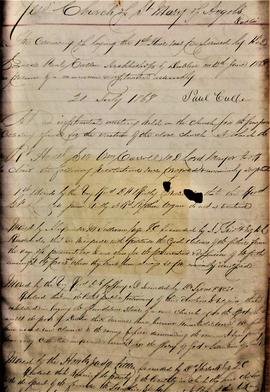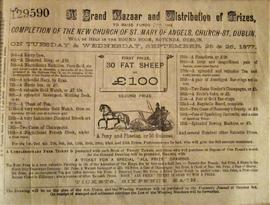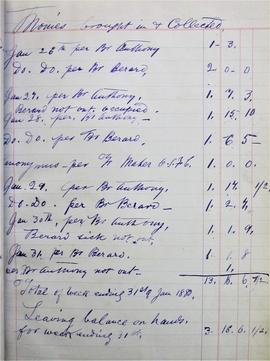Cote
Titre
Date(s)
- 1861-1927 (Création/Production)
Niveau de description
Étendue matérielle et support
Manuscript; 8 files and 3 items
Nom du producteur
Histoire archivistique
Source immédiate d'acquisition ou de transfert
Portée et contenu
A Capuchin chapel has stood on Church Street from at least 1720. The present-day Church of St. Mary of the Angels was designed James Joseph McCarthy (1817-1882) in a decorated Gothic style. McCarthy was also responsible for St. Saviour’s Dominican Church on Dominick Street in Dublin (also constructed in the fourteenth-century Gothic style), Mount Argus Church in Dublin, Maynooth College Chapel, and parish churches in Celbridge and Kilcock in County Kildare. The foundation stone for St. Mary of the Angels was laid by the Most Rev. Paul Cullen, Archbishop of Dublin, on 12 June 1868. The sermon for the occasion was preached by the celebrated Dominican preacher, Fr. T.A. Burke OP (1830-1883). The building was constructed under the supervision of the architect and was completed in 1881. The builders were Hammond of Drogheda. Fr. Daniel Patrick O’Reilly OSFC (1831-1894) was responsible for the raising of funds for the church’s construction and adornment. Two side-altars, dedicated to the Blessed Virgin Mary and to St. Francis, were installed in 1876. They were the work of Farrell and Sons of North Gloucester Street Lower (now Seán McDermott Street). Their most famous works in Dublin are the monuments to Archbishop John Troy and Cardinal Cullen in the Pro-Cathedral on Marlborough Street, and the statues of Sir John Grey and William Smith O’Brien on O’Connell Street. This section includes records relating to the construction and maintenance of the Sacred Heart Chapel which was built as an aisle church in 1908-9. This chapel was later enclosed and converted into a large sacristy.



